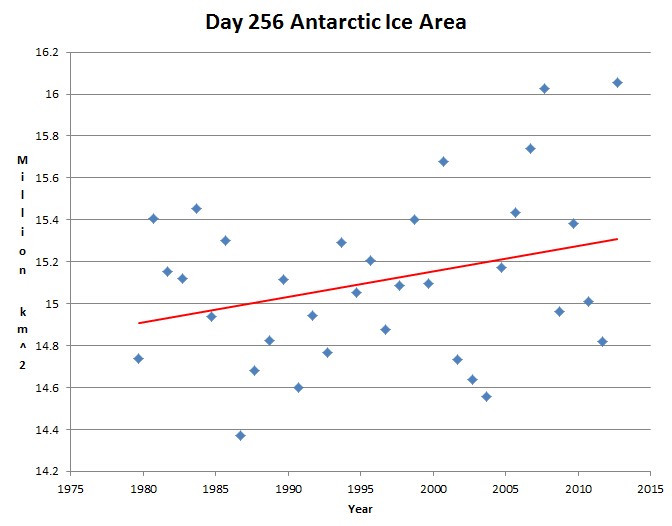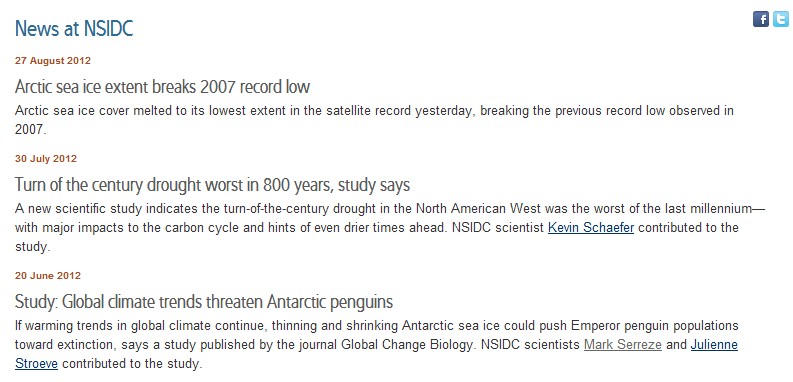

NSIDC does have a completely nonsensical discussion page explaining why Antarctic ice does not affect the climate.
Nonsense. There is very little sunlight reaching the Arctic Ocean in September, and much more reaching Antarctic ice - because it is located at lower latitudes. Arctic ice took its big decline in mid-August, after the sun was already low in the sky.Scientists monitor both Arctic and Antarctic sea ice, but Arctic sea ice is more significant to understanding global climate because much more Arctic ice remains through the summer months, reflecting sunlight and cooling the planet.
Antarctic ice is nearing an all-time record high, and is above average everywhere.Sea ice near the Antarctic Peninsula, south of the tip of South America, has recently experienced a significant decline. The rest of Antarctica has experienced a small increase in Antarctic sea ice.
Antarctic and Arctic ice move opposite each other. NSIDC's dissonance about this is astonishing.Antarctica and the Arctic are reacting differently to climate change partly because of geographical differences. Antarctica is a continent surrounded by water, while the Arctic is an ocean surrounded by land. Wind and ocean currents around Antarctica isolate the continent from global weather patterns, keeping it cold. In contrast, the Arctic Ocean is intimately linked with the climate systems around it, making it more sensitive to changes in climate.



'Wind and ocean currents around Antarctica isolate the continent from global weather patterns'
This is generally the case. However, there are instances when the Antarctic air gets loose, and when it does, it kills.
The AGW for lunch bunch likes to treat the Earth as if it was half a sphere...with the southern half missing. The did the exact opposite when the ozone hole in the Antarctic had them in a tizzy in the 70's. But then, global cooling was the rage of that day.
The real problem they don't talk about is what happens when the Geo-Engineering to cool the planet runs headlong into a massive cool-down caused by a slumbering Sun. Remember: thier global climate models are computer programs, full of fudge factors and wild-ass guesses. If you take a random number-generator program, set the number range from, say 100 to -100 with zero as the midpoint, and run it through the models long enough, the end result will always be a positive upslope over time.
That deck is stacked.